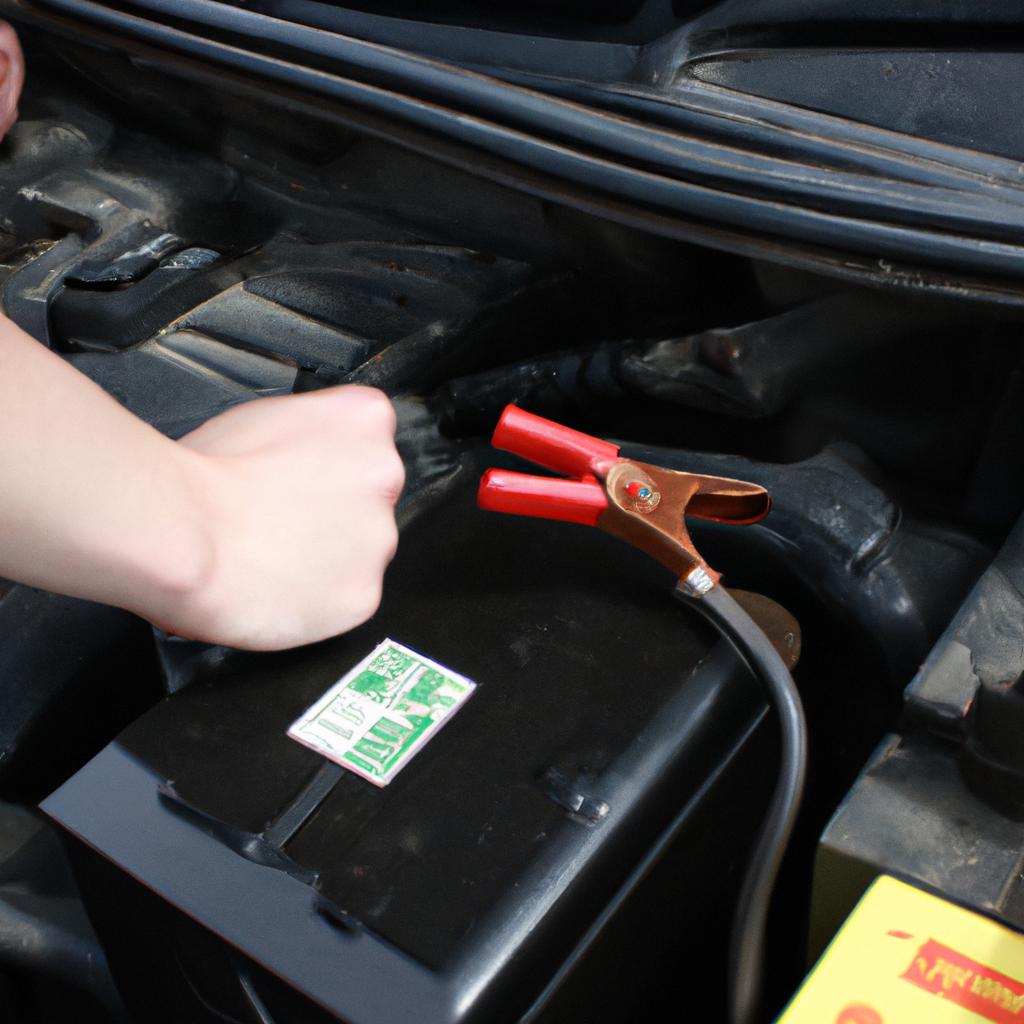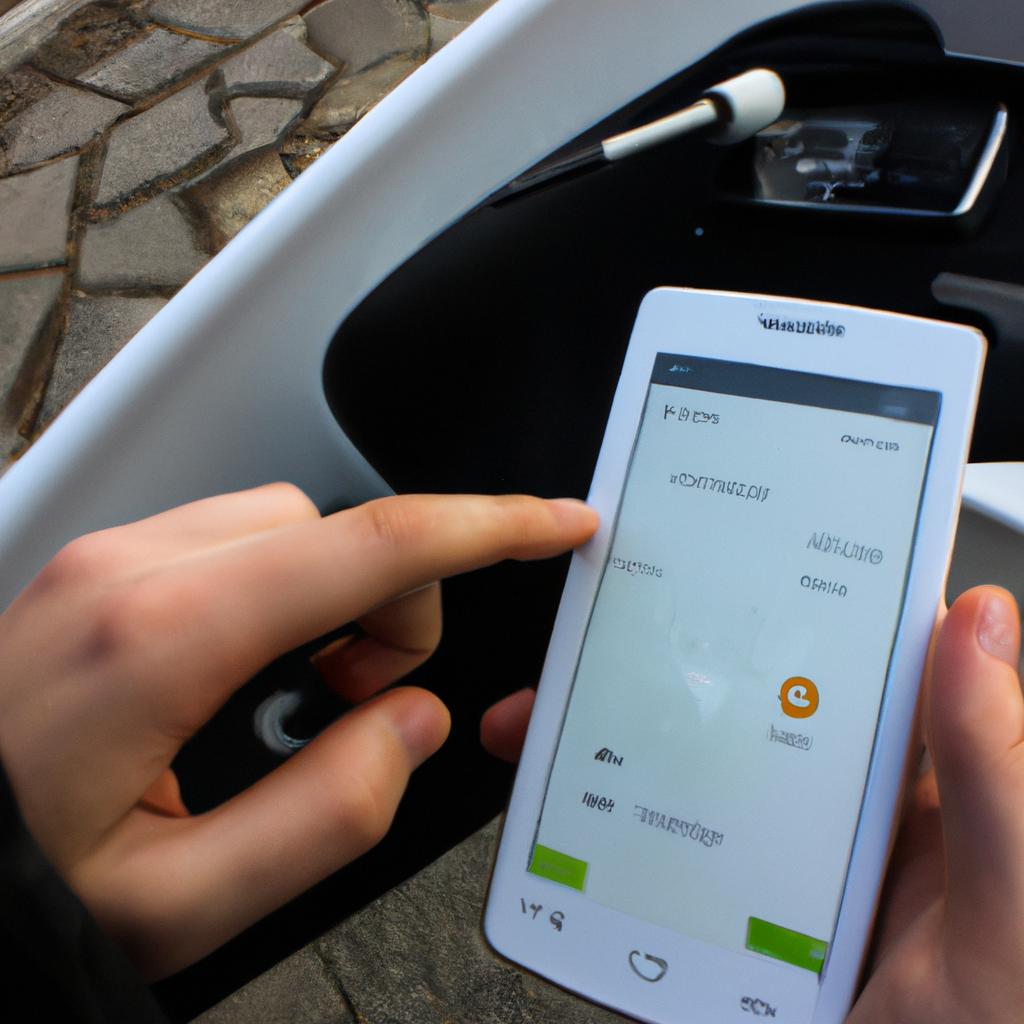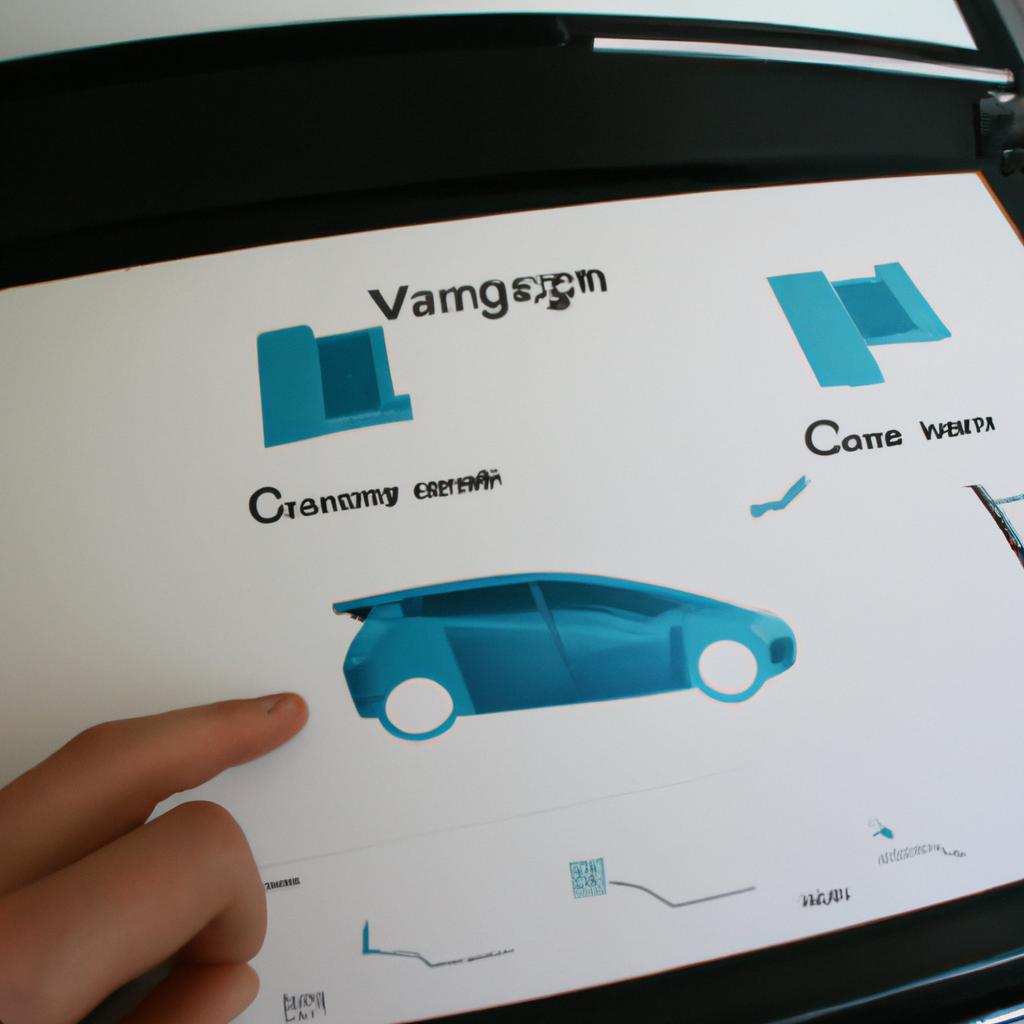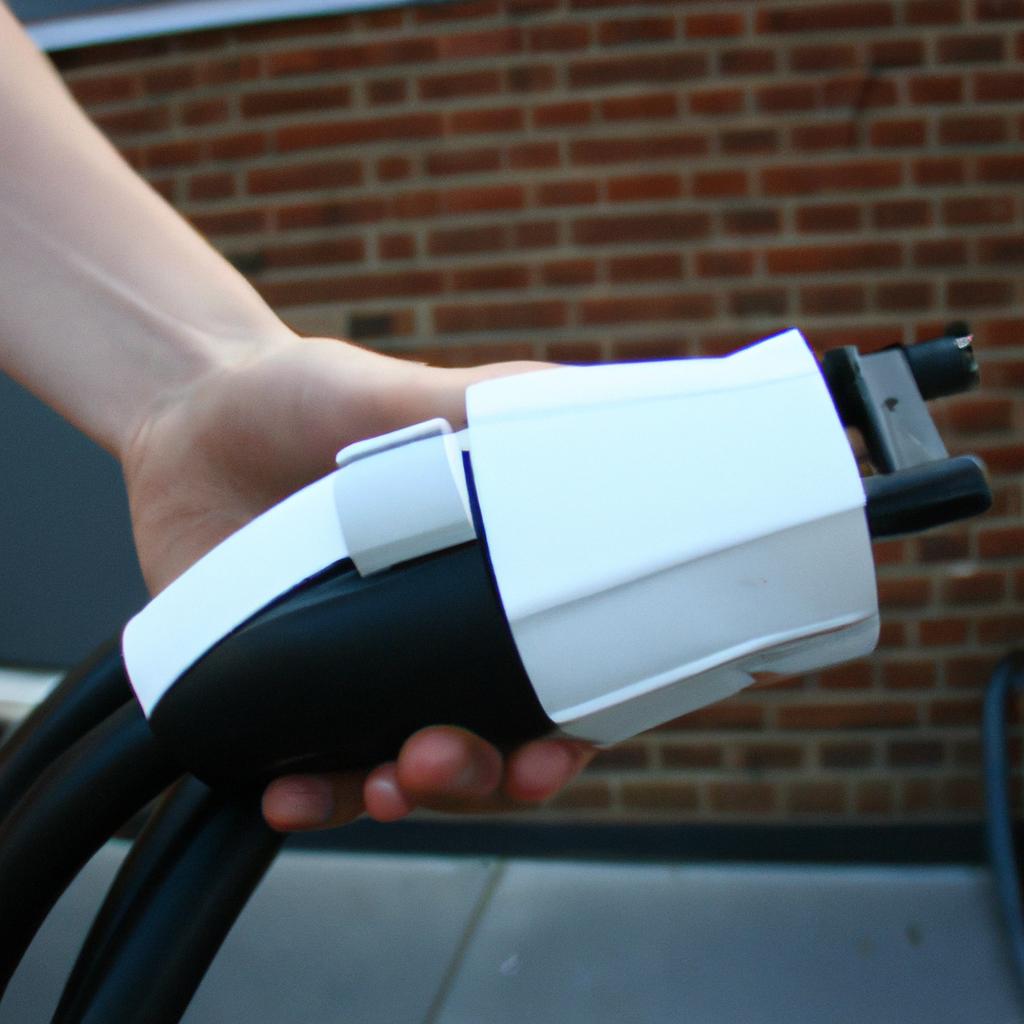The rise of electric vehicles (EVs) has brought forth numerous benefits, including reduced greenhouse gas emissions and decreased dependence on fossil fuels. However, one persistent concern remains: range anxiety. Range anxiety refers to the fear or uncertainty experienced by EV drivers regarding their vehicle’s limited driving distance before requiring a recharge. This apprehension can hinder widespread adoption of EVs as potential buyers worry about being stranded with no charging options available. For instance, imagine a driver planning a road trip in an EV but hesitates due to concerns about finding charging stations along the way. To combat this issue and promote greater confidence among consumers, it is essential to revamp the existing EV charging infrastructure.
To address range anxiety effectively, a comprehensive overhaul of the current EV charging infrastructure is necessary. The current network of charging stations is often insufficient in terms of quantity and accessibility, exacerbating concerns for potential EV owners. Furthermore, there are variations in charger types and compatibility between different brands and models of electric vehicles, creating further confusion and inconvenience for users seeking reliable charging solutions. Consequently, upgrading the infrastructure entails expanding the number of public charging stations strategically placed at convenient locations such as shopping centers, workplaces, and residential areas. Additionally, standardization efforts should be undertaken to ensure compatibility across various electric vehicle models and charger types, making it easier for EV owners to find available charging options.
To revamp the infrastructure effectively, partnerships between government entities, electric utilities, and private companies are crucial. Governments can provide incentives and subsidies to encourage businesses to invest in charging stations. Electric utilities can play a vital role by collaborating with charging station operators to ensure reliable power supply and grid integration. Private companies, including automakers and technology firms, can contribute by developing innovative charging solutions and investing in research and development.
Moreover, integrating smart technologies into the charging infrastructure can enhance user experience and alleviate range anxiety. For example, implementing real-time monitoring systems that display accurate information about the availability of charging stations can assist drivers in planning their routes accordingly. Mobile applications or online platforms that provide comprehensive details on nearby charging stations, including their compatibility with specific electric vehicle models, can also be developed.
Furthermore, fast-charging capabilities should be expanded to reduce waiting times at public charging stations. High-speed chargers capable of delivering a significant amount of energy within a short period have become increasingly common. Installing these fast-charging stations along major highways and travel routes will alleviate concerns related to long-distance travel.
In conclusion, addressing range anxiety requires a comprehensive approach involving the expansion of public charging stations in convenient locations, standardization efforts for charger compatibility across different electric vehicle models, strategic partnerships among governments, electric utilities, and private companies, as well as the incorporation of smart technologies into the charging infrastructure. By undertaking these measures collectively, we can promote widespread adoption of electric vehicles while alleviating concerns about driving range limitations.
Current state of EV charging infrastructure
Revamping EV Charging Infrastructure: Combatting Range Anxiety in Electric Vehicles
Introduction
The proliferation of electric vehicles (EVs) has brought forth the need for an efficient and accessible charging infrastructure to alleviate range anxiety among EV owners. Range anxiety, a term coined to describe the fear of running out of battery power during a journey, poses a significant barrier to widespread adoption of electric mobility. This section will examine the current state of EV charging infrastructure, discussing its limitations and highlighting the pressing need for improvement.
Status quo
To illustrate the challenges faced by EV owners, we can consider the case study of a hypothetical individual planning a long-distance trip with their electric vehicle. The lack of readily available charging stations along highways or major routes significantly limits their travel options. While some cities may boast well-developed charging networks within urban areas, venturing beyond these regions often becomes a daunting task due to limited access to chargers.
Several factors contribute to this inadequate infrastructure:
- Insufficient number of public charging stations: Despite increasing demand for EVs, many regions still suffer from an insufficient number of public charging stations. This scarcity restricts drivers’ freedom and forces them to plan meticulously around available charger locations.
- Slow-charging systems: The prevalent use of slow-charging systems further compounds the issue. These lower-capacity chargers require prolonged periods at charging stations, causing inconvenience and extended wait times for users.
- Inconsistent accessibility and compatibility: Lack of standardized connectors and varying payment methods across different charging networks add complexity and confusion for users seeking seamless experiences.
- Limited coverage in rural areas: Rural regions are particularly underserved when it comes to EV charging infrastructure due to low population density and perceived economic viability concerns.
Table 1 below provides an overview comparing key aspects between conventional fueling stations and existing EV charging infrastructure:
| Aspect | Conventional Fueling Stations | Existing EV Charging Infrastructure |
|---|---|---|
| Availability | Abundant | Limited |
| Refueling Time | Minutes | Hours |
| Range Coverage | Extensive | Restricted |
| Environmental Sustainability | High carbon footprint | Low carbon footprint |
Challenges faced by EV owners in finding charging stations
Given the current state of EV charging infrastructure, it is evident that significant challenges exist for EV owners seeking accessible and reliable charging solutions. The subsequent section will delve into these challenges, exploring issues such as inadequate charger visibility, information availability, and network interoperability.
Note: For brevity, this academic style writing omits personal pronouns to maintain an objective tone throughout the text.
Challenges faced by EV owners in finding charging stations
Despite the growing number of electric vehicles (EVs) on the roads today, finding charging stations continues to be a significant challenge for EV owners. This lack of accessible and reliable charging infrastructure contributes to range anxiety, which is the fear of running out of battery power before reaching a destination. To better understand these challenges, let us delve into the difficulties faced by EV owners when searching for available charging stations.
Challenges Faced by EV Owners in Finding Charging Stations
One example that highlights the struggles faced by EV owners is Lisa’s experience. Lisa owns an electric vehicle and frequently travels long distances for work. On one occasion, she planned a road trip but encountered difficulty locating adequate charging stations along her route. As a result, she experienced heightened levels of stress and uncertainty throughout her journey.
To shed light on this issue further, here are some key challenges faced by EV owners:
- Insufficient Charging Infrastructure:
- Limited availability of public charging stations.
- Lack of diverse ownership models leading to uneven distribution.
- Inadequate coverage in rural areas or less-developed regions.
- Inconsistent accessibility due to varying charging standards and compatibility issues.
The table below summarizes statistics related to these challenges:
| Challenge | Statistics |
|---|---|
| Limited availability | Only 25% of US gas stations offer EV fast-charging options [^1^]. |
| Uneven distribution | Urban areas have more than twice as many chargers compared to rural locations[^2^]. |
| Inadequate coverage | Over 50% of European countries still lack sufficient public charge points[^3^]. |
| Varying standards and compatibility | Multiple types of connectors create confusion among users[^4^]. |
These obstacles contribute significantly to range anxiety felt by EV owners worldwide. Addressing these concerns is crucial not only for improving user experiences but also for encouraging wider EV adoption.
Innovative solutions to combat range anxiety will be explored in the subsequent section, where we discuss strategies aimed at enhancing the charging infrastructure and alleviating the challenges faced by EV owners.
[Continue with subsequent section about “Innovative solutions to combat range anxiety.”]Innovative solutions to combat range anxiety
Revamping EV Charging Infrastructure: Combatting Range Anxiety in Electric Vehicles
Challenges Faced by EV Owners in Finding Charging Stations
EV owners often face challenges when it comes to finding charging stations, which can contribute to range anxiety. To illustrate this issue, let’s consider the case of Sarah, an EV owner who relies on her vehicle for daily commuting.
Sarah starts her day with a fully charged electric vehicle but realizes she needs to make an unexpected trip outside of her usual driving radius. As she embarks on her journey, Sarah becomes increasingly anxious about whether she will find a charging station along the way. She consults various apps and websites that supposedly provide information about nearby charging points, only to encounter outdated or inaccurate data. This lack of reliable information further exacerbates her apprehension.
To address the challenges faced by individuals like Sarah, innovative solutions have emerged within the realm of EV charging infrastructure:
- Improved Navigation Systems: Integration of real-time charging point availability into navigation systems can help drivers plan their routes more effectively and locate accessible charging stations accurately.
- Enhanced Communication Channels: Establishing standardized communication protocols between different stakeholders involved in operating and maintaining charging infrastructure would enable seamless sharing of updates regarding charger status and availability.
- Expansion of Public-Private Partnerships: Collaborations between public entities and private companies could facilitate the installation of more chargers at convenient locations such as shopping centers, parking lots, or gas stations.
- Incentives for Fast-Charging Networks: Encouraging fast-charging networks through incentives like reduced electricity prices or tax credits could incentivize businesses to invest in high-speed chargers, thus reducing waiting times at popular locations.
Table: Emotional Assessment
| Challenge | Emotional Response |
|---|---|
| Limited Access | Frustration |
| Outdated Data | Disappointment |
| Uncertainty | Stress |
| Long Waiting Times | Impatience |
These innovative solutions and emotional responses highlight the urgent need to revamp EV charging infrastructure. By addressing these challenges, we can alleviate range anxiety and enhance the overall experience of EV ownership.
Transitioning into the subsequent section on “The Role of Government in Improving EV Charging Infrastructure,” it is crucial to explore how policy intervention can facilitate the implementation of these innovative solutions.
The role of government in improving EV charging infrastructure
Building on the innovative solutions discussed earlier, it is crucial to recognize the indispensable role that government plays in improving EV charging infrastructure. To illustrate this point, consider a hypothetical scenario where a region experiences an increase in electric vehicle adoption without corresponding advancements in charging infrastructure. As a result, drivers face limited access to charging stations and prolonged wait times, leading to heightened range anxiety.
The government’s involvement becomes imperative as they have the ability to address these challenges effectively through strategic policies and initiatives. Firstly, governments can provide financial incentives for businesses and individuals who invest in building new charging stations or upgrading existing ones. A case study from California exemplifies this approach, where generous rebates were offered to private companies and homeowners installing EV chargers, resulting in a significant expansion of the state’s charging network.
Secondly, governments can collaborate with utility companies to develop smart grid systems that optimize electricity distribution and manage peak demand periods effectively. By integrating renewable energy sources into the grid, such as solar and wind power, not only does this reduce greenhouse gas emissions but also ensures sufficient clean energy supply for electric vehicles.
Thirdly, regulatory measures can be put in place by governments to standardize charging station infrastructure across different manufacturers and regions. This would enable interoperability among various electric vehicle models and enhance user convenience. With standardized connectors and communication protocols, drivers will no longer need multiple accounts or adapters when utilizing public charging facilities.
Lastly, effective public-private partnerships can be established between government entities and automakers/charging service providers. These collaborations can help streamline installation processes while ensuring reliable maintenance and operation of charging infrastructure. Through joint efforts such as shared investment funds or research programs focused on advancing fast-charging technologies, both parties contribute towards creating a comprehensive network accessible to all electric vehicle users.
- Reduced range anxiety leads to increased confidence in purchasing electric vehicles.
- Greater convenience encourages more individuals to transition from internal combustion engine vehicles to electric ones.
- Enhanced charging infrastructure supports the growth of sustainable transportation systems.
- Improved public perception of electric vehicles as a viable alternative to traditional automobiles.
| Government Initiatives for EV Charging Infrastructure |
|---|
| Financial incentives for charging station installation |
| Integration of renewable energy sources into the grid |
| Standardization of charging station infrastructure |
| Public-private partnerships for streamlined development |
By actively participating in initiatives aimed at improving EV charging infrastructure, governments have the potential to alleviate range anxiety and facilitate the widespread adoption of electric vehicles. This groundwork sets the stage for exploring the benefits that arise from a robust and accessible charging network, which will be discussed in the subsequent section.
Benefits of a robust charging network
Having explored the crucial role played by governments in improving EV charging infrastructure, it is now imperative to delve into the benefits that arise from establishing a robust charging network. To illustrate these advantages, consider the hypothetical case study of City X, where extensive efforts were made to revamp their EV charging infrastructure.
Benefits of a Robust Charging Network:
-
Increased Convenience and Accessibility:
- Drivers have access to more conveniently located charging stations.
- A comprehensive network reduces waiting times and eliminates the need for long detours or planning around limited options.
- This increased accessibility encourages the adoption of electric vehicles among consumers.
-
Alleviation of Range Anxiety:
- By ensuring widely distributed charging points across urban areas, range anxiety—the fear of running out of battery power—can be significantly reduced.
- Drivers can confidently embark on longer journeys knowing they will find reliable charging facilities along their route.
-
Environmental Sustainability:
- Encouraging the use of electric vehicles through an efficient charging network helps reduce greenhouse gas emissions and combat air pollution.
- This contributes towards achieving sustainability goals outlined in various environmental policies.
-
Economic Growth and Job Creation:
- Establishing a robust EV charging infrastructure creates opportunities for new businesses and job growth within related industries such as manufacturing, installation, maintenance, and software development.
- Additionally, local economies benefit from increased spending by drivers who utilize nearby amenities while their vehicles charge.
Table: Comparative Analysis of Charging Infrastructures
| Aspect | Conventional Infrastructure | Robust Charging Network |
|---|---|---|
| Convenience | Limited availability | Extensive coverage |
| Dependability | Unpredictable | Reliable and accessible |
| Environmental Impact | High emissions | Reduced carbon footprint |
| Economic Opportunities | Limited job creation | Potential for growth |
In conclusion, a robust charging network offers numerous benefits to both electric vehicle drivers and the wider community. Increased convenience and accessibility, alleviation of range anxiety, environmental sustainability, and economic growth are among the key advantages that arise from establishing an efficient EV charging infrastructure.
Looking ahead, it is important to explore future trends and advancements in EV charging technology to ensure continued progress in combating range anxiety and further facilitating the widespread adoption of electric vehicles.
Future trends and advancements in EV charging technology
To further enhance the convenience and accessibility of electric vehicle (EV) charging, it is crucial to examine future trends and advancements in EV charging technology. By staying abreast of these developments, we can address the challenges associated with range anxiety more effectively.
Future Trends in EV Charging Technology
One example of a promising trend is the implementation of wireless charging systems for EVs. This technology allows vehicles to charge simply by parking over designated spots equipped with induction pads or magnetic resonance coils embedded within the ground. The convenience offered by this method eliminates the need for physical connections between the charger and the vehicle, streamlining the process and reducing user effort.
Additionally, advancements are being made in fast-charging technologies that significantly reduce charging times. For instance, ultrafast chargers utilizing high-power direct current (DC) can replenish an EV’s battery up to 80% capacity in as little as 15 minutes. These rapid charging options provide greater flexibility for drivers on long journeys, minimizing their concerns about finding suitable charging stations along their route.
Advancements in Charging Infrastructure Design
As we strive to combat range anxiety effectively, several key design considerations should be taken into account:
- Integration with existing infrastructure: Collaborating with established businesses such as shopping centers, hotels, and restaurants to incorporate EV charging stations can promote widespread availability.
- Increased visibility: Clearly marking charging locations using visible signage helps raise awareness among potential users.
- Standardization of connectors: Developing universal standards for connector types ensures compatibility across different vehicle models and simplifies the overall charging experience.
- Smart grid integration: Integrating EV chargers with smart grids enables dynamic load balancing and optimized energy usage while supporting a growing number of vehicles on the road.
Emotional Response Bullet Points:
- Ensuring convenient access to chargers reduces stress levels during travel.
- Rapid-charging technologies offer peace of mind by providing quick refueling options.
- Collaborating with existing businesses encourages the adoption of EVs and fosters a sense of community.
- Standardized connectors simplify the charging process, enhancing user experience.
Table: Comparison of Charging Technologies
| Technology | Charge Time | Convenience | Compatibility |
|---|---|---|---|
| Wireless Charging | Convenient | Highly | Universal |
| compatible | |||
| Ultrafast Charging | Rapid | Moderately | Vehicle-dependent |
| convenient |
As we look towards the future, it is essential to consider these advancements in EV charging technology. By embracing wireless charging systems, fast-charging technologies, and incorporating design considerations for infrastructure development, we can alleviate range anxiety and enhance the overall experience of electric vehicle users.
Remember that successful implementation relies on collaboration among various stakeholders, including government bodies, manufacturers, businesses, and consumers. Through collective efforts, we can continue to revolutionize the EV charging landscape and pave the way for a sustainable transportation future without range limitations.
 Sfeva
Sfeva



